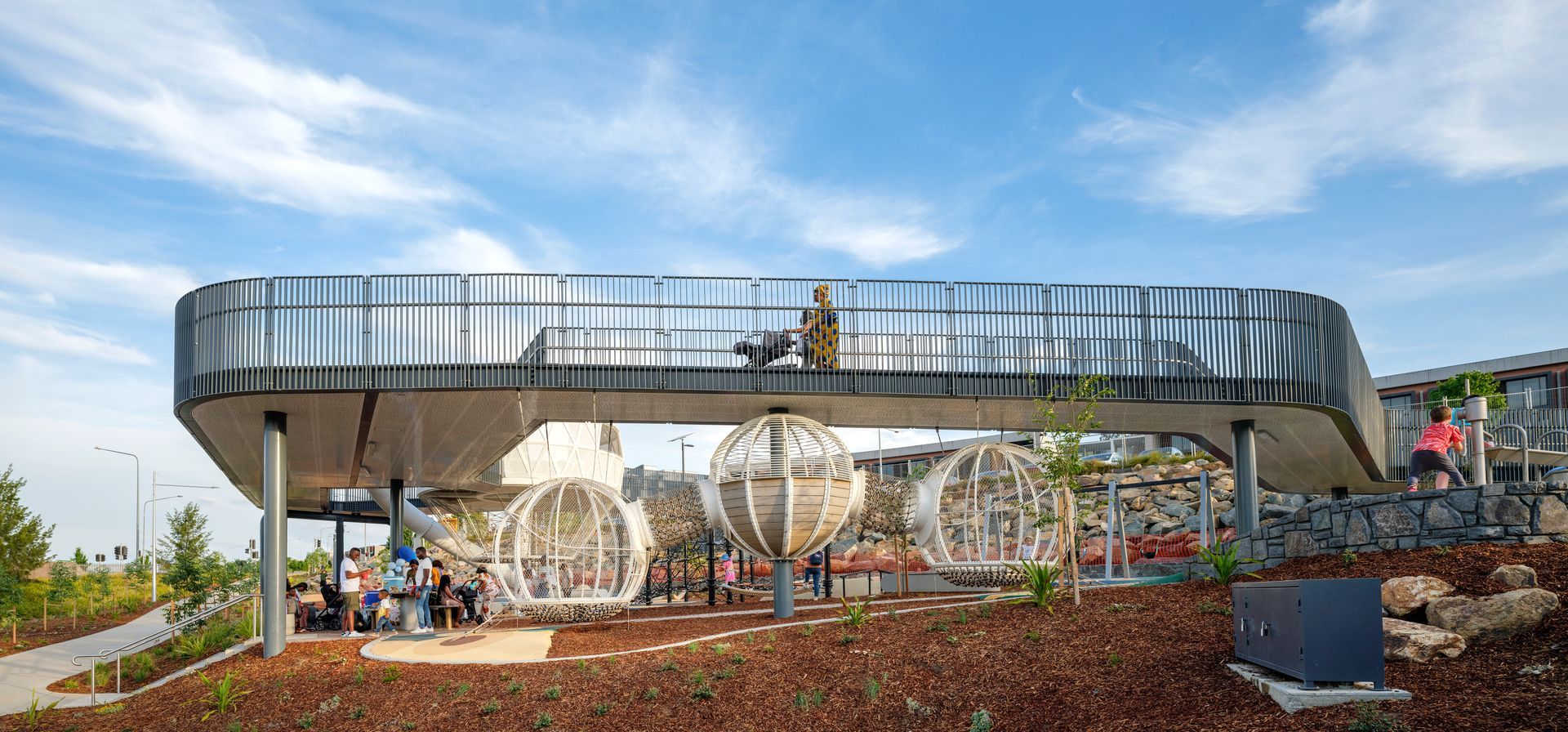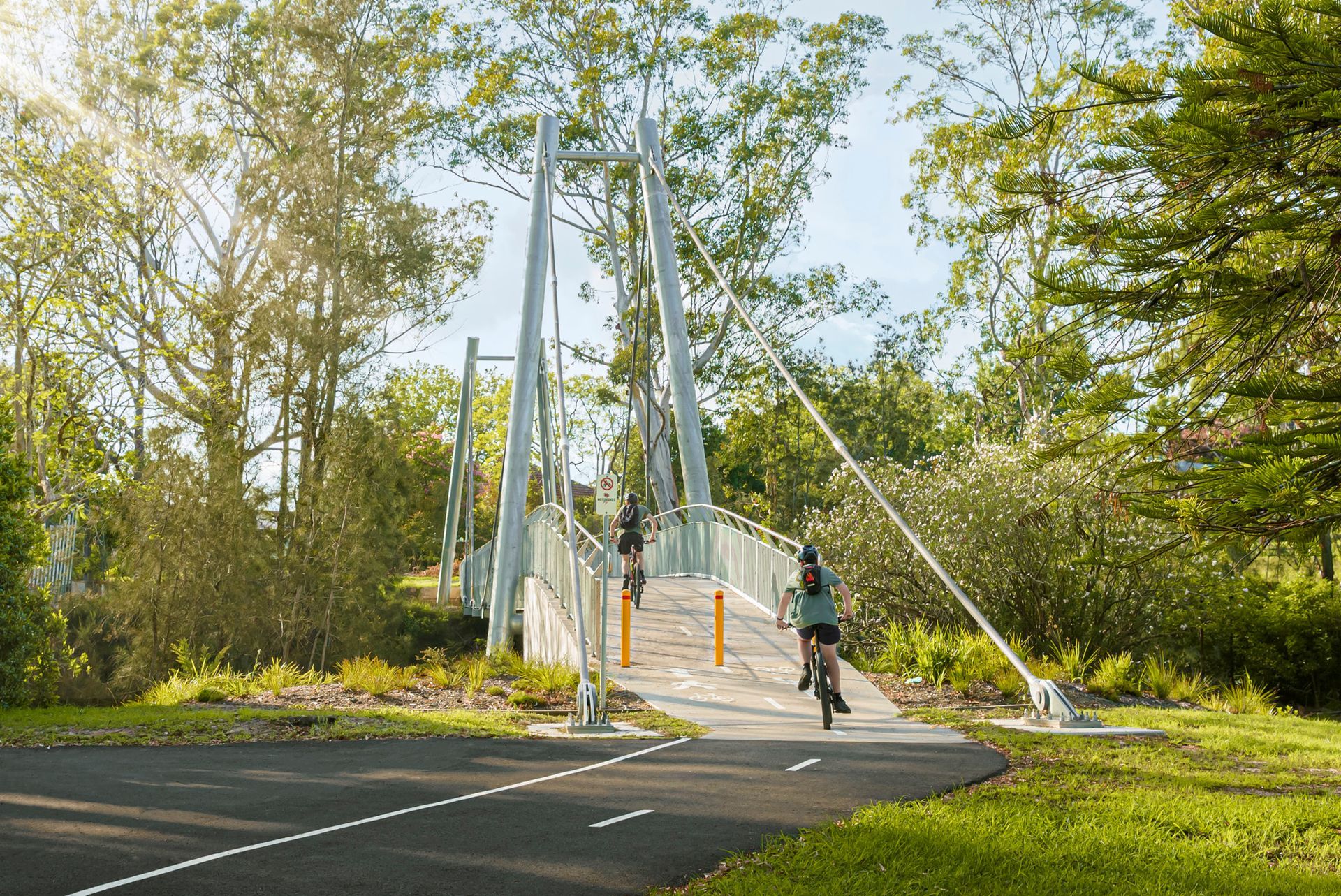Are you getting maximum value from your project budget?
Every outdoor project has a budget. But it’s how you spend that budget – and who you choose to spend it with – that’s often far more critical in determining the ultimate value your project brings to the community. To explore the role of value, and how to unlock it, we spoke with Matthew Carleton, Associate Landscape Architect at Vee Design, who is currently working with Fleetwood on a major Play project for Lendlease at Jingeri Park in Redland Bay.
FLEETWOOD Urban: Thanks so much for your time, Matthew. Can we start by asking what ‘value’ means to you on a project?
MATTHEW CARLETON: For me, value comes down to the people experiencing a place; understanding their needs and successfully creating a balance between design and delivery to really engage communities. That’s where the true value lies, because without that success, you don’t have meaningful public open spaces
FWU: So it’s not all about price?
MC: Value is a broad concept that goes far beyond price. In terms of what we do (at Vee Design) the value of any project is only as strong as the way the community accepts that project when it’s completed. To me, that’s where the real success comes to light, getting the community involved and seeing their excitement along the way. It’s actually one of the things I love about working with Fleetwood; going through the very clear process of designing bespoke structures and spaces that, yes, meet the needs of your clients but also suit the needs of the communities they’re created for. That matters to us, and it matters to you too.

FWU: So regardless of what a structure costs, if people aren’t engaging with it, it hasn’t been a valuable addition to the community?
MC: That’s absolutely right. Most people will never know how much work or money went into creating something. They might see a structure and say like, ‘wow, that must be expensive’ but they’ll never truly understand the process behind it – unless they were involved in it themselves. But as long as they get that enjoyment and satisfaction of place making from those structures, to them it provides value. Whether that’s from a play perspective, a community perspective, or even just the official perspective from the end client and stakeholders.
FWU: Of course, every project does have a budget. In your experience, how do you extract as much value out of that budget as possible?
MC: To me, it’s all about communication. Having strong communication lines and really understanding the overall project vision is critical. That’s something Fleetwood does very well with the likes of Hamish (Project Lead, Hamish Abraham) and others coming to us frequently as a project evolves. You’ll use our brief, but there’s always a lot more to it from your perspective, particularly when we’re working with Mark (Design Lead, Mark Jol). You get into the room with Mark and his excitement is just bouncing off the walls! You can see how he visualises our ideas and tries to make them better. But he’s also thinking about the processes needed to actually do it.
FWU: It’s interesting you say that Matthew, because we feel it’s the process that really unlocks the best possible outcomes, and value, on a project.
MC: We just love Fleetwood’s process. A lot of other playground companies will just shoot us a fancy 3D render and expect that to be it. We’ll be like, ‘whoah, slow down, take a step back!’
Whereas working with Fleetwood usually starts with us all getting in the room together to collaborate, communicate and explore the options and creating a simple sketch, firstly of an idea – and it really evolves from there. That’s a critical point in the project.
Without respecting those processes and idea pipelines, it can really limit a project’s potential – and that’s what Fleetwood does very well. We’ll start with a sketch, then take concepts into the detailed design, then to the 3D renders which are the last thing rather than the first, and that’s what we want to see. There’s so much value being added along the way.

FWU: We often find creative stakeholders get quite excited about the value of this process. But others perhaps don’t share the same enthusiasm. Do you find it hard sometimes to explain the need to go through that process to realise the full potential of an outdoor structure?
MC: There are definitely times when it can be difficult. Some asset managers, for example, tend to just see things from a maintenance perspective, which can be really hard for us. In fact, I’d actually say this is an increasing trend we’re seeing.
I think as an industry, we’re still trying to crack the code on getting them more invested in the project journey. What we often find, particularly with local authority groups, is that not everyone is truly present or aligned as a project progresses. People tend to look at things through a set lens and they’re not that interested in what other lenses there might be. That can be really tricky, and requires clear messaging and education, often using case studies from our previous success stories.
FWU: It can be a delicate balance.
MC: The key is definitely to try and bring them along on the journey with you. Then, if you do need to have those difficult conversations, they can better understand where you’re coming from, your reasons why and hopefully support decisions that will help to unlock more of that potential value. Easier said than done, of course!
FWU: Sometimes people assume big value can only come from big budgets. However Fleetwood Design Lead, Mark Jol, is adamant you can pack a lot of value into a relatively modest budget, if you go about it the right way. Would you agree?
MC: That’s definitely the truth of it. It’s also why working with someone like Mark, especially in the early stages of a play project, is so valuable for us. Landscape architects are sometimes guilty of having a vision and wanting a structure to look a certain way and maybe sacrificing play value to get it.
But it’s important to remember what kids will use those spaces for. That’s why Mark is so great, because he’s really good at bringing us back to the end user. We’ll have a broad conversation about what we want to achieve. But then Mark and Fleetwood are able to refine that and define exactly what our clients and the community are getting in terms of maximising value and play value. It’s very helpful.
FWU: You mentioned before not all project suppliers follow this approach?
MC: I think Fleetwood really are trend leaders in this space and have been for some time – although I do see others now moving towards a similar model. They used to say, ‘this is what you get, here it is’ and they’d be able to get that over the line. But that’s no longer the case. Competitors are switching to that more collaborative model and understanding there are better outcomes to be enjoyed for them and the community. But I’d say Fleetwood is still leading the market in a really positive way. In my experience it’s not all about selling your products; it’s just as much about creating a space the community loves and enjoys. That’s your end goal. Monetary value is still important, of course. But the true measure of success of any place is how the community responds to it. You do that so well.
FWU: The word ‘evolve’ has popped up several times. The idea that together we can take an idea and make it even better by going through that evolutionary process. Ultimately, that’s what value is all about, isn’t it?
MC: That really hits the nail on the head! If someone – be it through their expertise, their skills, their creativity or their processes – can help you make your project better, they’ve added value. That’s when you know you’ve been part of a truly collaborative process, with all parties moving towards an aligned outcome by contributing their diverse skills and experience. I guess on the flip side, if you’re not all moving things towards a better outcome, you have to wonder why you’re actually working together?
More from Fleetwood Files.
Explore
Certifications
Environmental Management : ISO14001
Quality Management : ISO 9001
OHS Management : ISO 45001
All Rights Reserved | Fleetwood Urban | Privacy Policy





